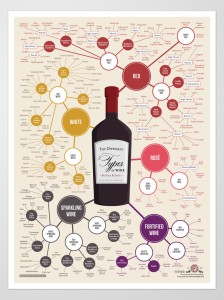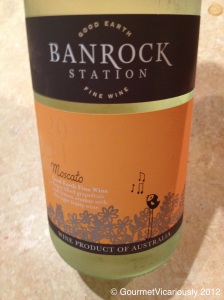Hi everyone,
I’ve had a few questions along the way while writing this blog and while I am still a novice when it comes to wine I thought I would give you the answers I have learnt or my views on the subject so that people can make up their own minds and have a starting point from which they can develop their own understandings towards wines.
Question 1: Where did you learn about wines from?
I have worked part-time in a bottle shop for just over two years and it has really been during this period that I came to have a love and appreciation for wine. I originally began working in a store which was in a more affluent part of Perth where people had income to spare on a more expensive bottle of wine and through discussions with them I began to learn little wine facts and opinions. I have since moved and worked across a variety of locations and along the way come across a variety of customers from all different cultures, socio-economic back grounds, wine and alcohol preferences, you name it. I have also through work been provided with some education on wines, however much of what I have learnt has come from tasting different wines and then discussing them with different people.
I have also travelled to Europe a few times, mainly at my expense and it has provided me with a love of Europe, their take on food, wine and life in general is one which I would love to adopt in the future. Travelling across Europe is something that I hope to do again in the near future so that I can not only have easier access to a wider range of grape varietals but also so that I can really try old-world wines and hopefully know enough about them to enjoy them.
So to answer the original question, I have learnt about wines from many different sources but by far my most knowledgeable moments have been when I have had the chance to sample different wines to develop my own understanding and preferences and secondly, discussing with other people both more and less knowledgeable about wine than myself.
Question 2: My sister says all Taylors wine is good. Would you agree?
Taylors is a wine label which is well known in Australia and is one which I often recommend to customers when they are looking for a gift and want something safe. Although I am yet to actually try this brand, besides their Gewürztraminer, which disappointed me more as a varietal than a label. My approach to wine is slightly different in that often I prefer either a few wines from a winery or I may prefer a grape varietal from across a single region.
For me the grape varietal and the region are more important than the producer, however when I am at work selling wines the opposite is often the case. Taylors does produces some good wines, don’t get me wrong but there are so many other smaller boutique wineries around the same price-point in bottle shops that I would love to try before getting to the big brands. This view does make it hard to recommend wines at work as I often try and enjoy wines that my store do not carry.
Taylors 2010 Shiraz however seems to have been an exceptional vintage as I have had exceptional reviews and recommendations from customers, fellow collegues and the few bottles that I have seen in some stores seem to carry quite a few trophies, gold and silver medals. I must try and get my hands on a bottle or two from this vintage to see what all the hype around it is, even though Shiraz is not my favourite red varietal.
Question 3: What’s the optimum temperature to serve red, and white wines (Bubbly too)?
Basic: Whites and Bubbly = chilled, Reds = room temperature.
More complex: Same as above however consider these temperatures to not be reflective of your current location but rather the ambient temperatures that continental Europe would have had a few centuries ago when the basic model above was coined.
This is a topic I have been meaning to cover in a Wino101 post and will hopefully do so in the near future.
Until next time!
























